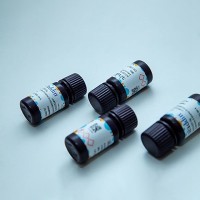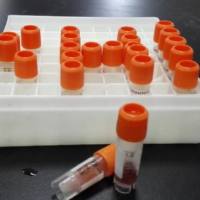Simultaneous Labeling of Single- and Double-Strand DNA Breaks by DNA Breakage Detection-FISH (DBD-FISH)
互联网
593
DNA Breakage Detection-Fluorescence In Situ
Hybridization (DBD-FISH) permits simultaneous and selective labeling of single- and double-strand DNA breaks in individual
cells, either in the whole genome or within specific DNA sequences. In this technique, cells are embedded into agarose microgels,
lysed and subjected to electrophoresis under nondenaturing conditions. Subsequently, the produced “comets” are exposed to
a controlled denaturation step which transforms DNA breaks into single-stranded DNA regions, detected by hybridization with
whole genome fluorescent probes or the probes to specific DNA sequences. This makes possible a targeted analysis of various
chromatin areas for the presence of DNA breaks. The migration length of the DBD-FISH signal is proportional to the number
of double strand breaks, whereas its fluorescence intensity depends on numbers of single-strand breaks.
The detailed protocol for detection of two types of DNA breaks produced by ionizing radiation is presented. The technique
can be used to determine intragenomic and intercellular heterogeneity in the induction and repair of DNA damage.





![DBD-H [=4-(<i>N</i>,<i>N</i>-二甲氨基磺酰)-7-肼基-2,1,3-苯并恶二唑] [HPLC标记用]&131467-86-2](https://img1.dxycdn.com/p/s14/2024/1219/104/8045872348620279681.jpg!wh200)



